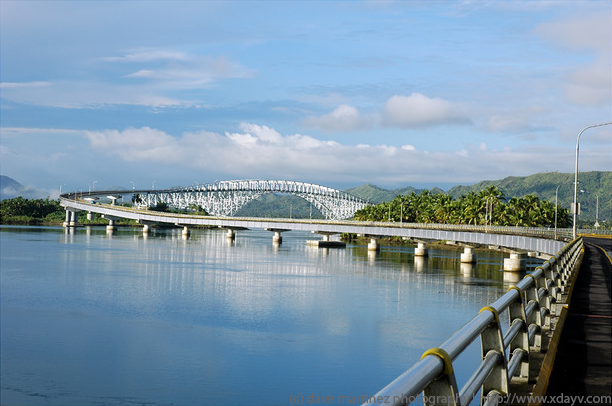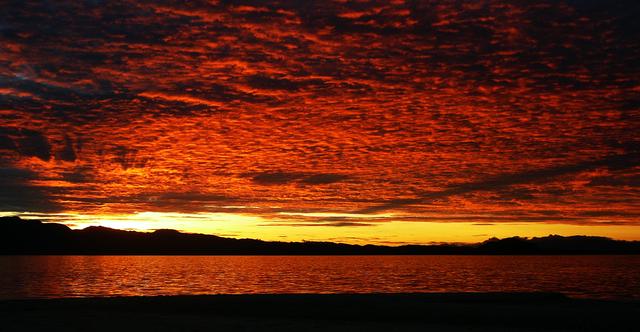Leyte is an island in the Eastern Visayas island group in the Philippines. It is divided into two provinces, Leyte Province and Southern Leyte. Each province includes some nearby smaller islands. Leyte is connected by bridges across narrow straits to the larger Samar Island and to the smaller Biliran island. The two largest cities are the capital, Tacloban, on the east coast near Samar Island, and Ormoc on the western coast.

- Tacloban City – capital of Leyte Province
- Palo - The religious and historical center of Leyte Province, and suburb of Tacloban.
- Tanauan - The Skimboarding Capital of the Philippines.
- Babatngon
- Burauen
- Carigara
- Abuyog
- Ormoc City
- Baybay City
- Palompon
- Hindang
- Inopacan
- Maasin City
- Sogod
- Limasawa – an island municipality south of mainland Leyte
The province is divided into two provinces, Leyte province and Southern Leyte; the former occupying 75% of the island and the latter the remaining 25%. For practical reasons, we treat Leyte as one region with good transportation links.
To many, Leyte is best known as the starting point of the liberation of the Philippines during World War II in 1944. On October 20, 1944, General Douglas MacArthur made his landing to the Philippines, following his well-remembered promise that "I shall return" when he left the country, then a United States colony, during the Japanese invasion in 1942. After MacArthur's return and the ensuing battle to liberate the island, Leyte eventually witnessed one of the largest naval battles in history, the Battle of Leyte Gulf, which is an American victory despite kamikaze attacks.
Waray is spoken by people from the eastern part of Leyte, about 40% of the population of the province, including most of the people in the capital city, Tacloban.
Cebuano/Bisaya is the most common language in Southern Leyte and the western part of Leyte Province, with about 60% of the population of the province speaking it.
- San Juanico Bridge. At 2.16 km long, this is the longest bridge spanning a body of seawater in the Philippines. It spans the San Juanico Strait from Tacloban to Santa Rita on Samar Island.
- Agas-Agas Bridge, Sogod, Southern Leyte. The tallest bridge in the Philippines.
- McArthur Park. You can visit the historical landmark of Leyte, which is in municipality of Palo. This is where the Americans landed to begin retaking the Philippines from the Japanese during the Pacific War, making good on General McArthur's promise "I shall return".
San Juanico Bridge. At 2.16 km long, this is the longest bridge spanning a body of seawater in the Philippines. It spans the San Juanico Strait from Tacloban to [[Santa Rita]] on [[Samar Island]].
Agas-Agas Bridge, Sogod, Southern Leyte. The tallest bridge in the Philippines.
McArthur Park. You can visit the historical landmark of Leyte, which is in municipality of Palo. This is where the Americans landed to begin retaking the Philippines from the Japanese during the [[Pacific War]], making good on General McArthur's promise "I shall return".

- Festivals - every town have their own celebration of Fiesta or Festivals in honor to their patron saints like Pasaka Festival of Tanauan, Buyugan Festival in Abuyog and Pintados-Kasadyaan Festival usually held in Tacloban City.
- Cuatro Islas.
Festivals - every town have their own celebration of Fiesta or Festivals in honor to their patron saints like Pasaka Festival of Tanauan, Buyugan Festival in Abuyog and Pintados-Kasadyaan Festival usually held in Tacloban City.
Cuatro Islas.
Leyte is famous for it delicacies like
Chocolate moron which is made of glutenous rice melted with cocoa or tablea, Binagol which is made of talyan plant (giant taro) being cooked with the hard shell of coconut and the sweetening syrup.
Leyte is famous for its beverages especially the tuba or what they called red wine. It is actually made of fermented Coconut Nectar they put something bark of a tree (they called it baruk) to make it red in color. Almost every houses have tuba stored. Usually they drink it during occasion or for past time.
